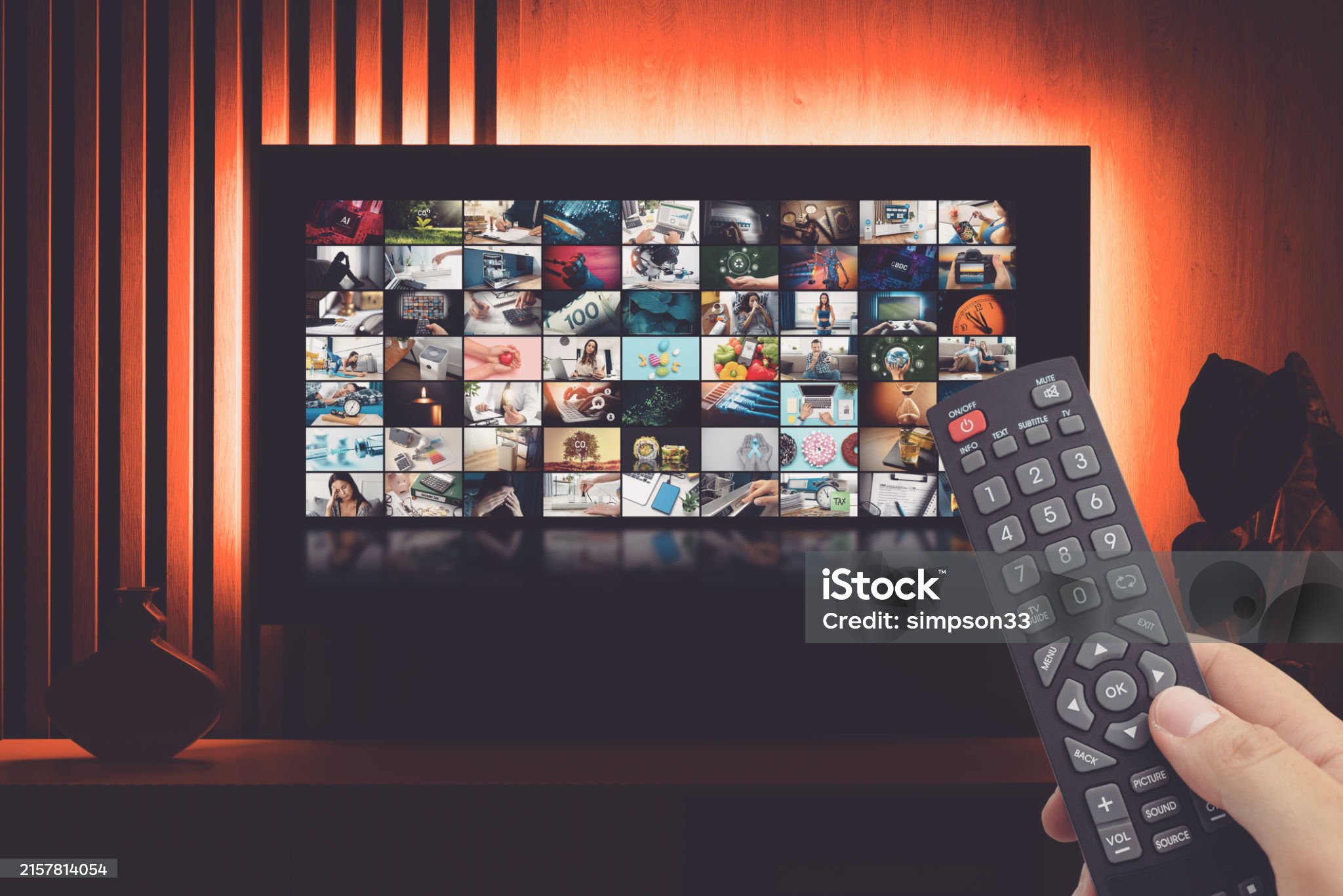1.Understanding IPTV

IPTV, also known as Internet Protocol Television, is becoming progressively more influential within the media industry. Unlike traditional cable and satellite TV services that use expensive and primarily proprietary broadcasting technologies, IPTV is streamed over broadband networks by using the same Internet Protocol (IP) that supports millions of personal computers on the current internet infrastructure. The concept that the same shift towards on-demand services is anticipated for the era of multiscreen TV consumption has already piqued the curiosity of various interested parties in technology integration and growth prospects.
Audiences have now embraced watching TV programs and other media content in varied environments and on a variety of devices such as smartphones, computers, laptops, PDAs, and additional tools, alongside conventional televisions. IPTV is still in its early stages as a service. It is growing, however, by leaps and bounds, and different commercial approaches are taking shape that may help support growth.
Some believe that low-budget production will probably be the first content production category to dominate compact displays and play the long tail game. Operating on the commercial end of the TV broadcasting pipeline, the current state of IPTV services and infrastructure, on the other hand, has several clear advantages over its rival broadcast technologies. They include HDTV, on-demand viewing, personal digital video recorders, voice, web content, and instant professional customer support via alternative communication channels such as mobile phones, PDAs, global communication devices, etc.
For IPTV hosting to function properly, however, the Internet edge router, the primary networking hub, and the IPTV server consisting of content converters and server blade assemblies have to work in unison. Dozens regional and national hosting facilities must be fully redundant or else the signal quality deteriorates, shows seem to get lost and fail to record, communication halts, the screen goes blank, the sound becomes discontinuous, and the shows and services will fail to perform.
This text will examine the competitive environment for IPTV services in the UK and the US. Through such a side-by-side examination, a number of meaningful public policy considerations across several key themes can be revealed.
2.Legal and Policy Structures in the UK and US Media Sectors

According to jurisprudence and the related academic discourse, the regulatory strategy adopted and the details of the policy depend on one’s views of the market. The regulation of media involves competition-focused regulations, media proprietary structures, consumer safeguarding, and the safeguarding of at-risk populations.
Therefore, if we want to regulate the markets, we need to grasp what media markets look like. Whether it is about ownership limits, studies on competition, consumer rights, or child-focused media, the regulator has to have a view on these markets; which media sectors are growing at a fast pace, where we have competitive dynamics, vertically integrated activities, and cross-sector proprietorship, and which industries are struggling competitively and ripe for new strategies of market players.
In other copyright, the current media market environment has already shifted from static to dynamic, and only if we analyze regulatory actions can we identify future trends.
The rise of IPTV across regions normalizes us to its dissemination. By combining a number of conventional TV services with novel additions such as interactive digital click here features, IPTV has the potential to be a key part of increasing the local attractiveness of remote areas. If so, will this be adequate to reshape regulatory approaches?
We have no data that IPTV has extra attractiveness to non-subscribers of cable or satellite services. However, certain ongoing trends have had the effect of putting a brake on IPTV growth – and it is these developments that have led to tempering predictions on IPTV growth.
Meanwhile, the UK adopted a liberal regulation and a proactive consultation with industry stakeholders.
3.Key Players and Market Share

In the UK, BT is the dominant provider in the UK IPTV market with a 1.18% market share, and YouView has a 2.8% share, which is the context of basic and dual-play service models. BT is typically the leader in the UK based on statistics, although it experiences minor shifts over time across the range of 7 to 9%.
In the United Kingdom, Virgin Media was the initial provider of IPTV based on digital HFC networks, with BT entering later. Netflix and Amazon Prime are the strongest OTT services in the UK IPTV market. Amazon has its own digital set-top box-focused service called Amazon Fire TV, similar to Roku, and has just launched in the UK. However, Netflix and Amazon are not available in any telecommunications provider networks.
In the American market, AT&T leads the charts with a market share of 17.31%, exceeding Verizon’s FiOS at 16.88 percent. However, considering only DSL-based IPTV services, the leader is CenturyLink, followed by AT&T and Frontier, and Lumen.
Cable TV has the majority hold of the American market, with AT&T drawing an impressive 16.5 million users, largely through its U-verse service and DirecTV service, which also is active in South America. The US market is, therefore, segmented between the main traditional telephone companies offering IPTV services and new internet companies.
In Europe and North America, leading companies use a converged service offering or a customer retention approach for the majority of their marketing, including three and four-service bundles. In the United States, AT&T, Verizon, and Lumen depend on their proprietary infrastructure or existing telecom networks to provide IPTV options, though to a lesser extent.
4.Subscription Types and Media Content

There are differences in the programming choices in the UK and US IPTV markets. The types of media offered includes live national or regional programming, programming available on demand, archived broadcasts, and unique content like TV shows or movies only available through that service that could not be bought on video or broadcasted beyond the service.
The UK services offer traditional rankings of channels similar to the UK cable platforms. They also offer mid-size packages that cover essential pay-TV options. Content is grouped not just by preferences, but by distribution method: terrestrial, satellite, Freeview, and BT Vision VOD.
The main differentiators for the IPTV market are the plan types in the form of preset bundles versus the more customizable channel-by-channel option. UK IPTV subscribers can opt for extra content plans as their content needs shift, while these channels are included by default in the US, in line with a user’s initial long-term plan.
Content collaborations reflect the distinct policy environments for media markets in the US and UK. The age of shrinking windows and the shifts in the sector has significant implications, the most direct being the commercial position of the UK’s leading IPTV provider.
Although a new player to the crowded and competitive UK TV sector, Setanta is placed to attract a large customer base through its innovative image and securing top-tier international rights. The strength of the brands goes a long way, alongside a product that has a cost-effective pricing and caters to passionate UK soccer enthusiasts with an attractive additional product.
5.Emerging Technologies and Upcoming Innovations

5G networks, in conjunction with millions of IoT devices, have disrupted IPTV transformation with the implementation of AI and machine learning. Cloud computing is greatly enhancing AI systems to implement new capabilities. Proprietary AI recommendation systems are increasingly being implemented by streaming services to engage viewers with their own unique benefits. The video industry has been revolutionized with a new technological edge.
A enhanced bitrate, either through resolution or frame rate advancements, has been a primary focus in boosting audience satisfaction and attracting subscribers. The breakthrough in recent years were driven by new standards developed by industry stakeholders.
Several proprietary software stacks with a compact size are nearing release. Rather than releasing feature requests, such software stacks would allow media providers to concentrate on performance tweaks to further enhance user experience. This paradigm, similar to earlier approaches, depended on consumer attitudes and their expectation of worth.
In the near future, as technological enthusiasm creates a level playing field in viewer satisfaction and industry growth reaches equilibrium, we predict a service-lean technology market scenario to keep elderly income groups interested.
We emphasize two key points below for the two major IPTV markets.
1. All the major stakeholders may participate in the evolution in viewer interaction by making static content dynamic and engaging.
2. We see VR and AR as the main catalysts behind the rising trends for these areas.
The constantly changing audience mindset puts data at the center stage for every stakeholder. Legal boundaries would obstruct easy access to consumers' personal data; hence, privacy regulations would not be too keen on adopting new technologies that may leave their users vulnerable to exploitation. However, the current integrated video on-demand service market indicates a different trend.
The cybersecurity index is presently at an all-time low. Technological advances have made cyber breaches more remote than manual efforts, thereby benefiting cybercriminals at a larger scale than traditional thieves.
With the advent of centralized broadcasting systems, demand for IPTV has been increasing rapidly. Depending on user demands, these developments in technology are set to revolutionize IPTV.
References:Bae, H. W. and Kim, D. H. "A Study of Factors affecting subscription to IPTV Service." JBE (2023). kibme.org
Baea, H. W. and Kima, D. H. "A Study about Moderating Effect of Age on The IPTV Service Subscription Intention." JBE (2024). kibme.org
Cho, T., Cho, T., and Zhang, H. "The Relationship between the Service Quality of IPTV Home Training and Consumers' Exercise Satisfaction and Continuous Use during the COVID-19 Pandemic." Businesses (2023). mdpi.com